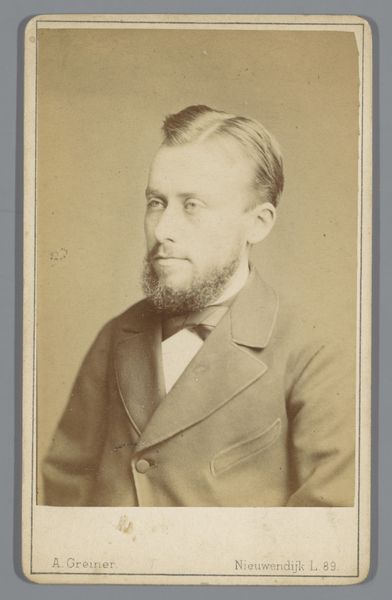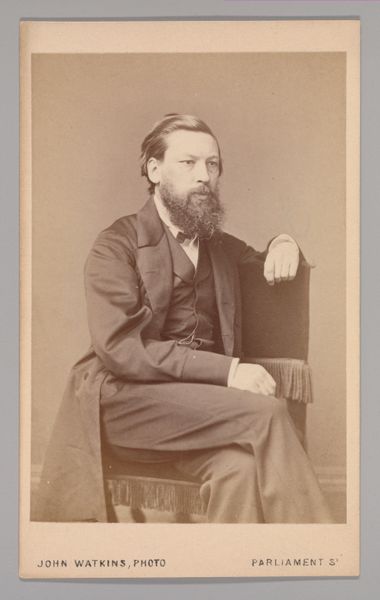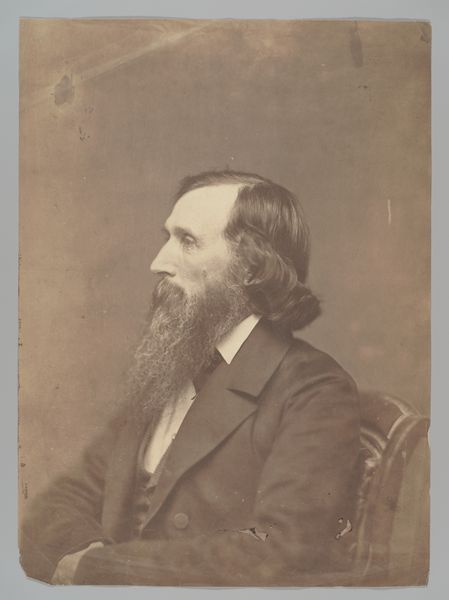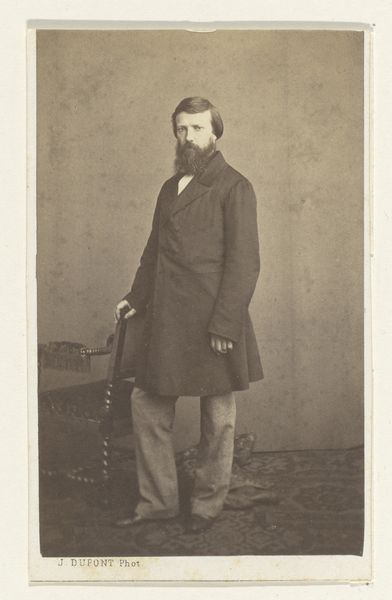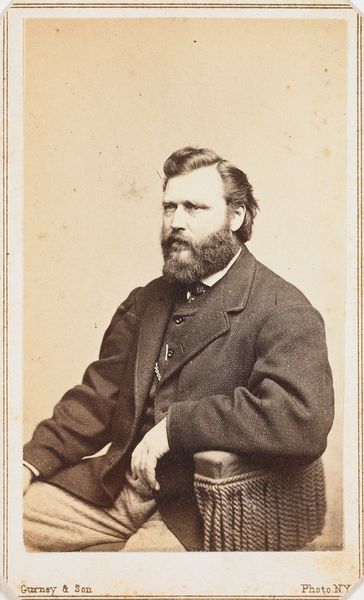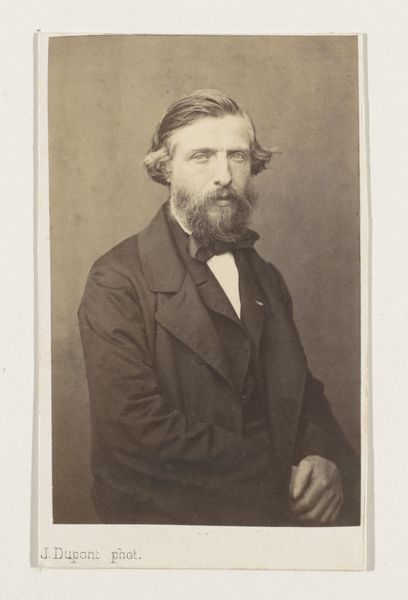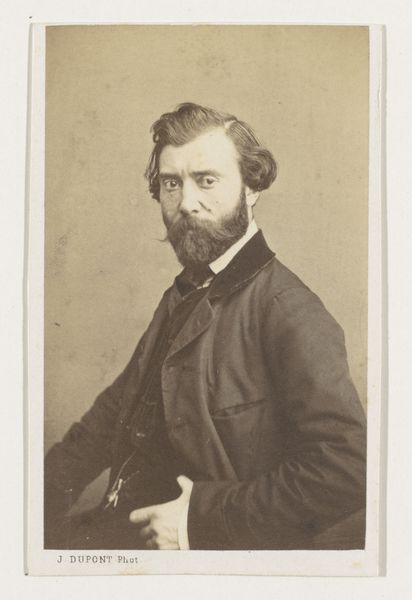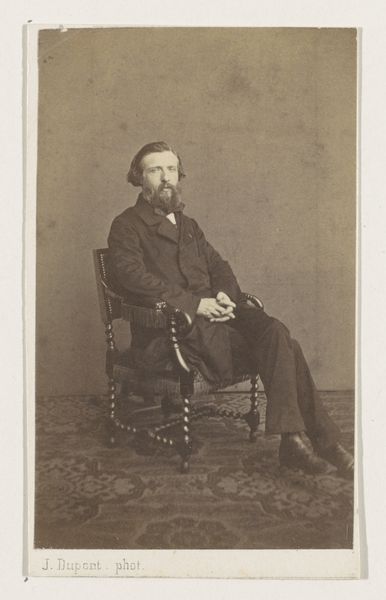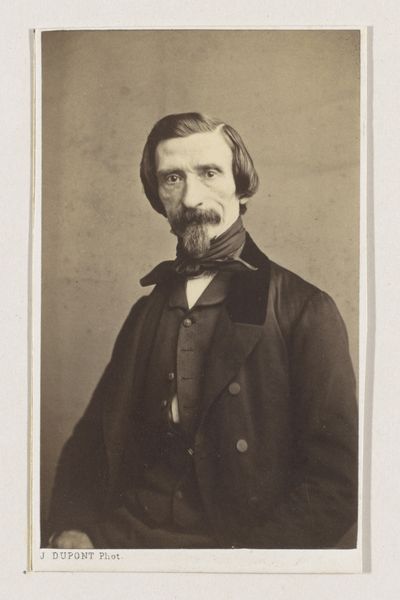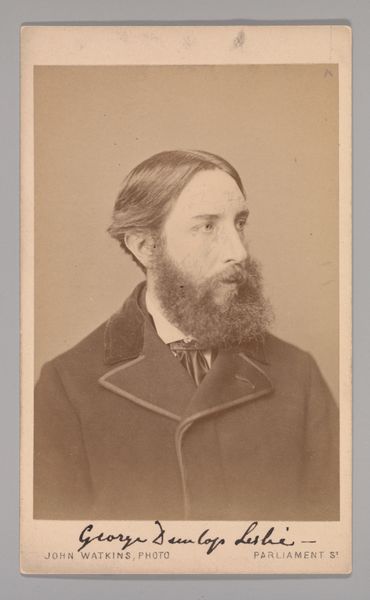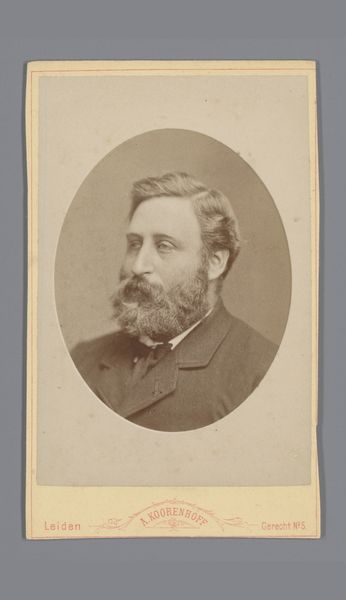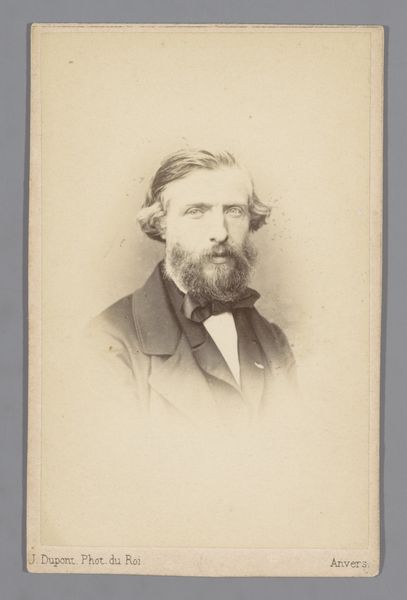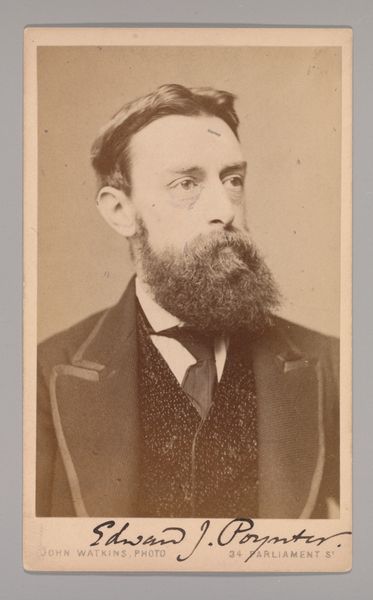
photography, gelatin-silver-print
#
portrait
#
portrait image
#
photography
#
gelatin-silver-print
#
realism
Dimensions: height 100 mm, width 62 mm
Copyright: Rijks Museum: Open Domain
Editor: So, this is a photograph titled "Portret van de schilder François Antoine de Bruycker, halffiguur," created in 1861 by Joseph Dupont. It's a gelatin-silver print, and there's something very direct and unfiltered about it, particularly in the subject's gaze. How do you interpret this work within its historical context? Curator: This portrait offers a fascinating glimpse into the self-representation of artists during the mid-19th century and the rise of photography as a tool for shaping public image. The fact that a painter, De Bruycker, chose photography for his portrait suggests a strategic engagement with modernity. Consider the social currency of such an image. Who was this image meant for? Was it commissioned, or part of a larger series of artists' portraits destined for public display, perhaps within artistic societies? Editor: That’s interesting. I hadn’t thought about it as a deliberate act of image-making for a specific audience. I was just considering it as a study of this man. Curator: Indeed. Early photography allowed for wider circulation of images and therefore ideas. A portrait of an artist could enhance their standing and solidify their presence in the art world. The choice of realism, captured by the camera's objective eye, also resonated with the growing artistic movements of the time that valued portraying life as it was. But the question remains: how did this medium influence perceptions of artistry itself? Did it democratize portraiture, or create new hierarchies within the art world? Editor: I suppose photography would allow for the 'everyman' to gain entry into a world once reserved only for nobility. Thank you. I'll think of these early portraits as tools in social mobility! Curator: Precisely. It offers a reminder that art, even in its seemingly simplest forms, often plays a part in larger social and political dialogues.
Comments
No comments
Be the first to comment and join the conversation on the ultimate creative platform.
